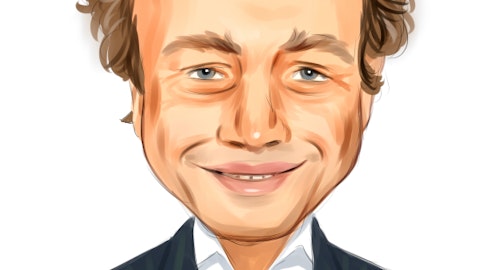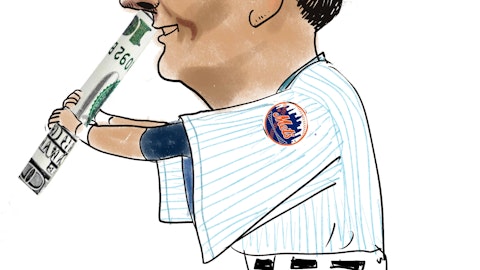2. Brighthouse Financial, Inc. (NASDAQ:BHF)
Greenlight Capital’s Stake Value: $177,302,000
Percentage of Greenlight Capital’s Q3 Portfolio: 11.88%
Number of Hedge Fund Holders: 29
Brighthouse Financial, Inc. (NASDAQ:BHF), a major American provider of annuities and life insurance, is one of the best stocks to buy now according to David Einhorn’s Greenlight Capital, with the hedge fund increasing its position in Brighthouse Financial, Inc. (NASDAQ:BHF) by 8% in the third quarter. Greenlight Capital owns 3.92 million shares of the company as of September, worth $177.3 million.
On December 2, Goldman Sachs analyst Alex Scott initiated coverage of Brighthouse Financial, Inc. (NASDAQ:BHF) with a Neutral rating and a $57 price target.
Brighthouse Financial, Inc. (NASDAQ:BHF) reported earnings for the quarter ending September on November 4. EPS over the period equaled $5.41, exceeding estimates by $1.88. The quarterly revenue came in at $2.42 billion, beating estimates by $196 million.
Arrowstreet Capital owns a $68.3 million position in Brighthouse Financial, Inc. (NASDAQ:BHF) as of Q3, which makes it one of the leading stakeholders of the company, out of a total of 29 hedge funds that were bullish on Brighthouse Financial, Inc. (NASDAQ:BHF) in the third quarter.
Here is what Greenlight Capital has to say about Brighthouse Financial, Inc. (NASDAQ:BHF) in its Q3 2021 investor letter:
“BHF reported what can only be called a stupendous result. BHF had adjusted operating earnings of $5.05 per share during the quarter compared to estimates of $3.28 per share. Full-year consensus moved from $13.75 to $16.18. The stock fell about 1% during the quarter to close at $45.23.
There is more to the story. BHF’s core business is variable annuities and to a lesser extent life insurance. But it also has something called a “closed block,” which is a bunch of legacy businesses that MetLife burdened BHF with at the time of the spin-off. These are business lines which are no longer being originated. BHF has them contained in a Delaware subsidiary for which there is minimal financial disclosure.
Skeptical investors have worried that this subsidiary could be a “black hole” that will drain the value from the rest of BHF. Well, something very strange happened to that theory this quarter: the regulators approved a $600 million dividend out of the Delaware subsidiary. Management, true to form, has given no hints as to what extent there will be more dividends to come.
To us, it seems that what was suspected to be a “black hole” is actually a “cookie jar.” We just don’t know how many cookies are in the jar. Either way, the consensus view that the run-off business will be a drain ought to be discarded.
$600 million is a lot of money. To BHF, it equates to more than $7 per share. Nobody expected this development. There are 11 analysts following BHF (1 buy, 7 holds, 3 sells), and not one of them changed their view of value based on this announcement. Moreover, one would think that if you found $600 million under the mattress, you would count that and ask whether anyone checked the couch cushions as well. But, as David noted, companies can report stupendous news…
We could go on and detail the quarterly results of several other companies in our portfolio, but we don’t wish to overkill the point.
It’s more productive to discuss how we think this situation will resolve itself. Share repurchases over time will unlock the value. We just don’t know when the market will notice. Going back to the BHF example, the company has already shrunk its share count by 30% from 120 million to 84 million. This has helped take stated book value per share from $120 to $175. In the most recent quarter, BHF authorized another $1 billion in buybacks, which is about a quarter of the company at the current price. As BHF continues in this fashion, eventually either the shares will re-rate or there won’t be many left.
We continue to hold the quaint view that shares represent a fractional ownership of a business. As the denominator of shares goes down, the fraction of the business that each share represents goes up. There are several companies in our portfolio, BHF included, that appear poised to return their current market caps to shareholders over the next few years.”





